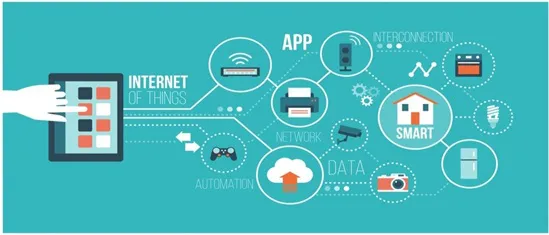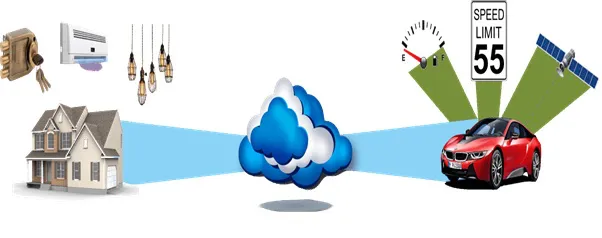
eBook - ePub
Smart Antennas: Recent Trends in Design and Applications
Praveen Kumar Malik, Pradeep Kumar, Sachin Kumar
This is a test
Condividi libro
- English
- ePUB (disponibile sull'app)
- Disponibile su iOS e Android
eBook - ePub
Smart Antennas: Recent Trends in Design and Applications
Praveen Kumar Malik, Pradeep Kumar, Sachin Kumar
Dettagli del libro
Anteprima del libro
Indice dei contenuti
Citazioni
Informazioni sul libro
This reference provides the reader with focused information about microstrip antenna design and applications. Readers are first introduced to the basic design of microstrip antennas. Subsequent chapters explain how microstrip antennas are suitable for practical applications. These chapters cover topics such as fractal and defected ground structure antennas, microstrip antenna evaluation and the use of microstrip antennas in mobile communications and IoT applications. Scholars, researchers and industrial professionals involved in the fields of electronics and electrical engineering as well as instrumentation will benefit from the information given in this book.
Domande frequenti
Come faccio ad annullare l'abbonamento?
È semplicissimo: basta accedere alla sezione Account nelle Impostazioni e cliccare su "Annulla abbonamento". Dopo la cancellazione, l'abbonamento rimarrà attivo per il periodo rimanente già pagato. Per maggiori informazioni, clicca qui
È possibile scaricare libri? Se sì, come?
Al momento è possibile scaricare tramite l'app tutti i nostri libri ePub mobile-friendly. Anche la maggior parte dei nostri PDF è scaricabile e stiamo lavorando per rendere disponibile quanto prima il download di tutti gli altri file. Per maggiori informazioni, clicca qui
Che differenza c'è tra i piani?
Entrambi i piani ti danno accesso illimitato alla libreria e a tutte le funzionalità di Perlego. Le uniche differenze sono il prezzo e il periodo di abbonamento: con il piano annuale risparmierai circa il 30% rispetto a 12 rate con quello mensile.
Cos'è Perlego?
Perlego è un servizio di abbonamento a testi accademici, che ti permette di accedere a un'intera libreria online a un prezzo inferiore rispetto a quello che pagheresti per acquistare un singolo libro al mese. Con oltre 1 milione di testi suddivisi in più di 1.000 categorie, troverai sicuramente ciò che fa per te! Per maggiori informazioni, clicca qui.
Perlego supporta la sintesi vocale?
Cerca l'icona Sintesi vocale nel prossimo libro che leggerai per verificare se è possibile riprodurre l'audio. Questo strumento permette di leggere il testo a voce alta, evidenziandolo man mano che la lettura procede. Puoi aumentare o diminuire la velocità della sintesi vocale, oppure sospendere la riproduzione. Per maggiori informazioni, clicca qui.
Smart Antennas: Recent Trends in Design and Applications è disponibile online in formato PDF/ePub?
Sì, puoi accedere a Smart Antennas: Recent Trends in Design and Applications di Praveen Kumar Malik, Pradeep Kumar, Sachin Kumar in formato PDF e/o ePub, così come ad altri libri molto apprezzati nelle sezioni relative a Technology & Engineering e Mobile & Wireless Communications. Scopri oltre 1 milione di libri disponibili nel nostro catalogo.
Informazioni
Argomento
Technology & EngineeringCategoria
Mobile & Wireless CommunicationsImportance and Uses of Microstrip Antenna in IoT
Wani V. Patil1, *
1 Department of Electronics Engineering, G H Raisoni College of Engineering, Nagpur, Maharashtra 440016, India
Abstract
This chapter attempts to give consideration to how the IoT (Internet of Things) is attempting to revolutionize the world. IoT is a network wherein different devices interconnect and furnish to communicate with one another, helping to drive computerization to an advanced level. This helps all the connected devices to communicate with one another and decide by themselves without human intervention. Unconsciously, IoT applications are turning into a significant part of our life. The IoT resembles the system comprising different objects like devices, instruments, vehicles, unique structures, and different things implanted with electronic circuits, programming, different sensors, and system-network connectivity which empowers all of them to collect information. The IoT permits these different objects to sense and control distantly across existing network structure, and thus enables the chances for the physical world to incorporate into computer-based systems, enhancing the effectiveness and precision.
Keywords: Antenna Performance, Internet of things, Microstrip antenna, Wireless Communication.
* Corresponding author Wani V. Patil: Department of Electronics Engineering, G H Raisoni College of Engineering, Nagpur, Maharashtra 440016, India; E-mail: [email protected]
1. Birth of Internet of Things
We can elaborate IoT as the “Internet of Things”. In 1999, “Kevin Ashton, in an introduction to Proctor and Gamble, a co-founder of MIT's Auto-ID Lab proposed The Internet of Things. He spearheaded RFID (used in a standardized identification /bar-code identifier) for the applications of the supply-chain-management system. In 1982, changing the Coke machine introduced the network of the smart-devices concept at Carnegie Mellon University into the first internet-connected appliance [1] with the ability to report about its stock and to inspect whether recently stacked-beverages were cold. Kevin Ashton is a British innovator who invented the term “the Internet of Things” by introducing a framework where the Internet is connected with the physical world by pervasive
sensors. In this way, Kevin Ashton made the first statement which was written in 2009 in the RFID Journal. If we had computers that knew everything there was to know, using data they gathered without any help from us, they could track and count everything, and reduce waste, loss, and cost. They would know when things needed replacing, repairing, or recalling, and whether these were fresh or past their best. We need to empower computers with their own means of gathering information, so they can see, hear, and smell the world for themselves, in all its random glory. Kevin's statement highlighted the ideologies regarding the improvement of IoT. In IoT, the word 'Thing' points out towards any device embedded with different sensors having the capability to collect and transfer data over a network with no manual intercession. The embedded technology helps the devices to interact with internal states and the external environment and thus helps in the decision-making process. More or less, IoT is a platform that connects different devices to the internet and allows all to communicate with one another over the internet. IoT is a system of all interconnected devices that assemble and share the data. As a result, each of the assembled devices will learn from the experiences of the devices connected in the network like the human being used to do. IoT extends the human association, i.e. connect, contribute and collaborate to things. However, the system is complicated and we can elaborate it with the help of the model discussed in the next part.
An engineer or developer presents any of his designed applications with the record including the logic of the principles, expected errors and exceptions designed by him to the tester. Then issues encountered by the Tester are forwarded to the developer which includes multiple iterations and in this way a smart application is developed. Even the sensor at room temperature accumulates the information and sends it over the network that likewise helps to change the temperature of the other multiple devices sensors. For example, the sensor included in the refrigerator accumulates the information regarding the outside temperature and respectively changes the refrigerator’s temperature. Likewise, the air-conditioners can change their temperature accordingly. This is the way devices can communicate, contribute, and collaborate as shown in Fig. (1).
1.1. Advantages of the IoT
As the IoT enables the physical world to be controlled distantly by creating the opportunities to connect and coordinate with the computer-based frameworks over the internet by utilizing sensors and the internet, it results in automation in every field and furthermore empowers the advanced applications. The evaluation of such systems includes enhancement in accuracy, efficiency, and economic benefit without human interaction. IoT includes new technologies such as smart-grids,
smart homes, intelligent transportation, and smart cities as shown in Fig. (2). The significant advantages of IoT are:

What is IoT?

Connecting multiple devices.
• Improvement in the Engagement of the Customer – IoT helps to improve the customer experience by using automated action. For example, the sensors incorporated in the smart vehicle can automatically distinguish the issues and can timely notify the driver and the manufacturer about it. Before the arrival of the driver at the service station, the faulty part can be made available by the manufacturer at the service station.
• Optimization of the Technical Approach– IoT promotes innovations and helps to improve them. The manufacture can improve their plan and try to make them
more proficient by gathering information from various vehicle sensors and investigate them.
• Reduction in the waste – IoT uses real-time information for effectively processing the decision-making capacity for the effective resources management approach. For instance, if a manufacturer discovers faults in various engines, he may follow the assembling plant of those engines and can amend the issues with assembling belts.
These days, the world is surrounded by different IoT-empowered devices that are ceaselessly emanating information that is being communicated through different devices. Let us consider the necessary equipment used in the IoT hardware application. The applications of IoT can be found in every field of the communication system including the antenna design. An antenna is the most required part of communication devices like smartphones, smart cities, smartwatches, smart rings, smart TV, smart helmet, etc. The communication system must be efficient to transfer all types of data such as voice text and multimedia information. Microstrip antenna is broadly utilized in used specialized devices because of its low conformal and low profile properties [1]. Currently, industries are focusing on the Internet of things and their application. IoT devices more often required to communicate wirelessly as they can easily access the internet [2].